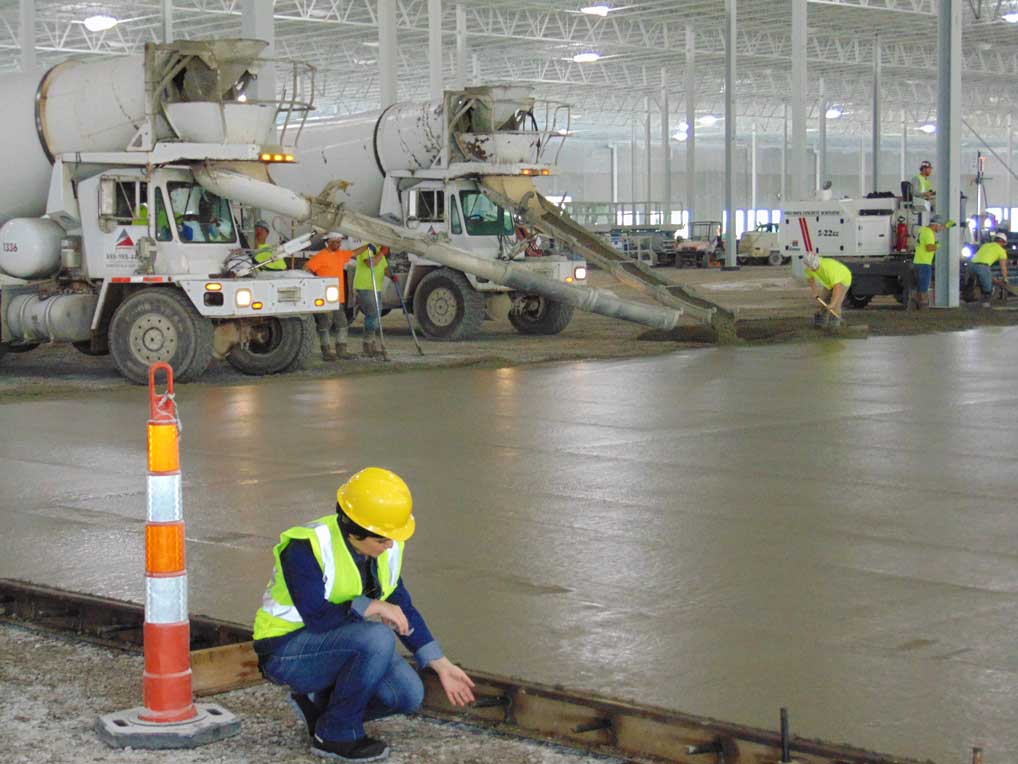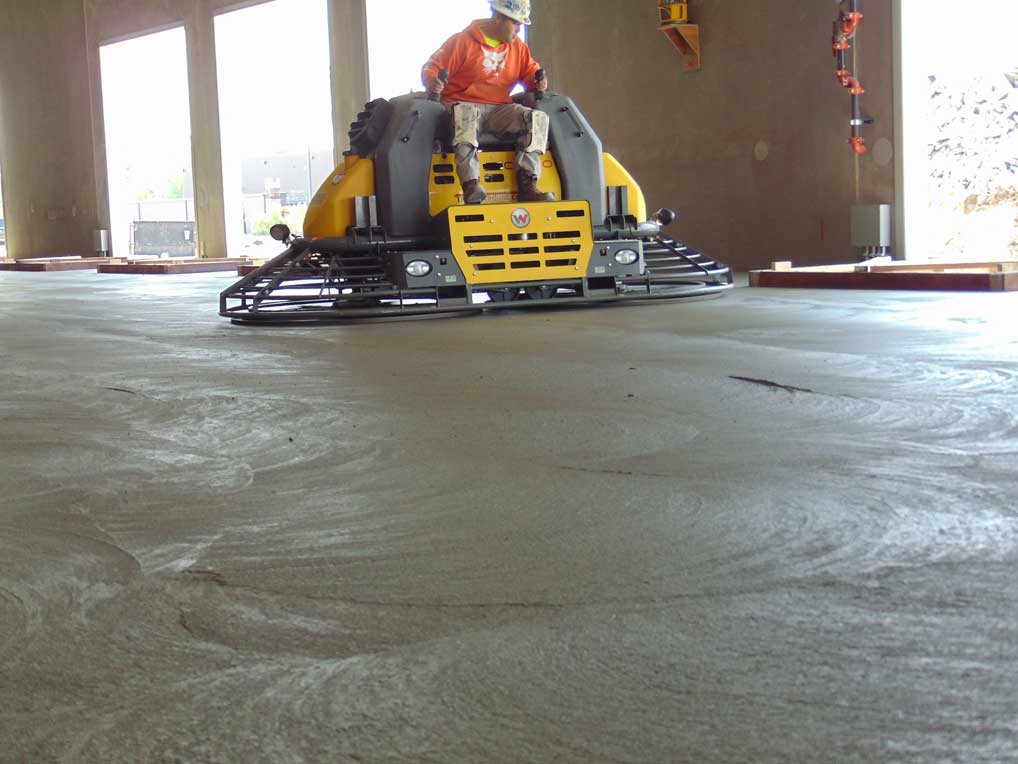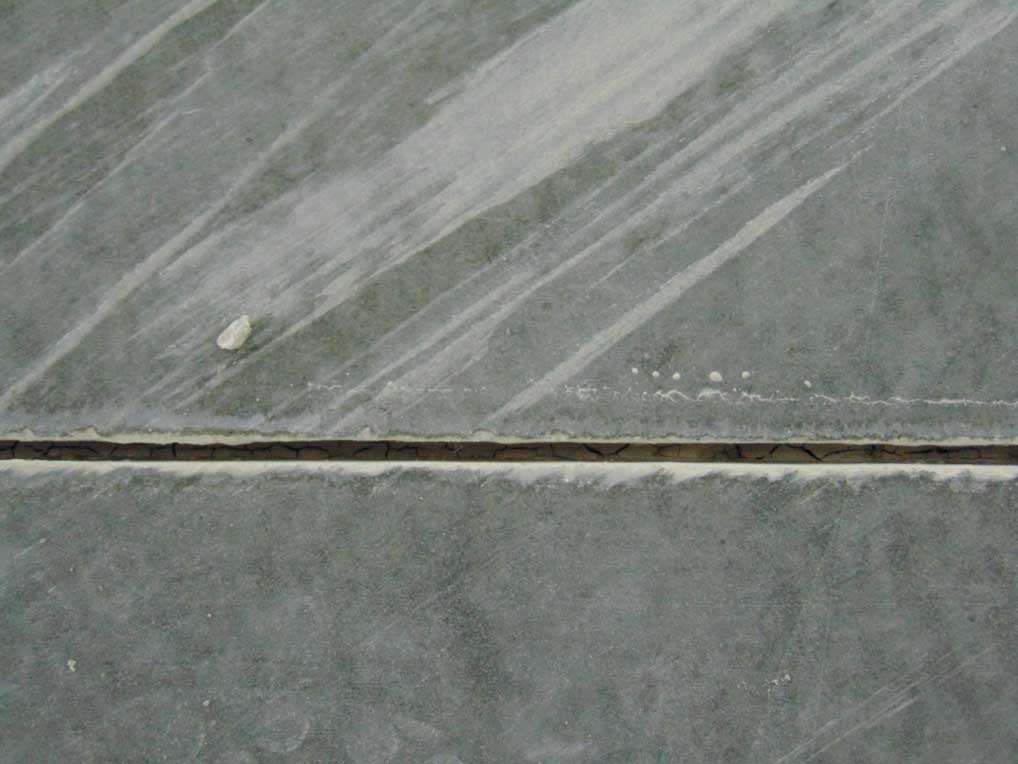
550,000 ft2 Slab, Class A Warehouse Reinforced with Helix
Samhar Hoz, Engineer, Helix Steel, inspects edge conditions of 7" slab. When using Helix, all cold joints must use steel edge pins to transfer loads across the joint.
With growing demand for office and manufacturing space in the Detroit-Metro area, Ashley Capital developed Liberty Park 3, a Class A light industrial building. The 7” Helix reinforced slab was built over a Geopier® foundation system, with a uniform load capacity of 1000+psf and a uniform subgrade modulus of 150 psi/in for the site.

Power Floating the Helix Reinforced Slab
With Helix in the slab, it is essential to adequately bull float and then power float the slab surface. This ensures that the Helix and aggregate drop down and the cement fines and cream come to the surface.
Taking into account the load capacity, soil composition, and original design for reinforcement, Helix Steel determined a dosage of 9 lbs. per yd3 would be the optimum dosage. Other reinforcement options were considered, but Helix was chosen for its ease of use, ability to shorten production timetable and provision of a safe pouring environment.

Saw Cutting with Helix Reinforcement
As can be seen above, there are no issues with saw cutting a Helix reinforced slab. It is important that the slab be walkable without indentation to ensure that the Helix fibers do not tear out of the concrete.
The contractor placed over 500 yd3 a day, a 10-20% increase over conventional rebar. As well Helix provided a strength improvement over conventional reinforcement. Trucks discharged in a continuous rhythm, similar to pouring unreinforced concrete.
Key roles on the project were:
- General Contractor, Oliver / Hatcher Construction
- Concrete Contractor, The Gilardone Company;
- Ready Mix Contractor, Superior Materials, LLC.